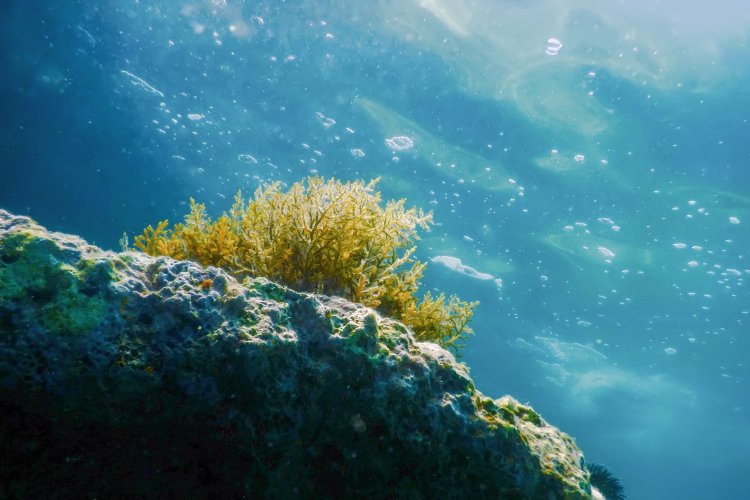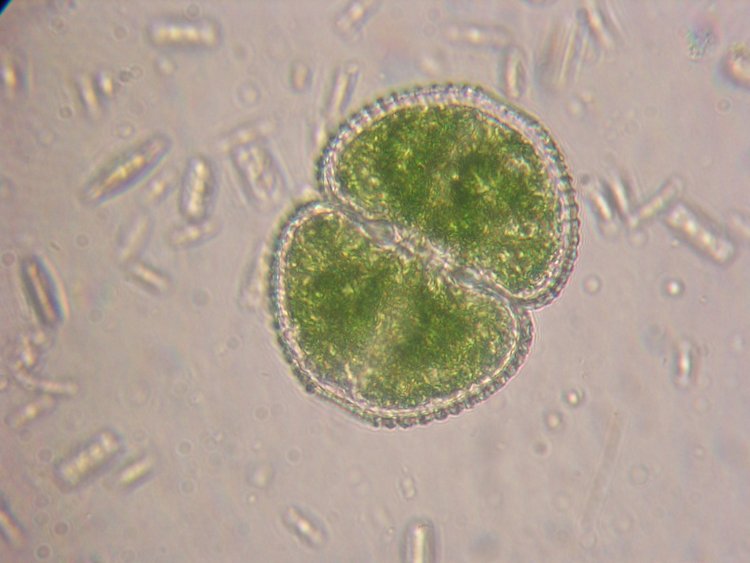The underwater world is beautiful and diverse. To some, it is a separate universe harboring a multitude of secrets, while others perceive it as a scientific and historical treasure that has served as a foundation for the emergence of modern plants. They were algae, the most ancient living things on Earth, that laid this foundation.
There are many scientific studies, expert opinions, and discussions regarding which inhabitants of the underwater world contribute to changing it, as well as how these changes impact the land. There are surely a lot of questions. As you know, algae are a group of aquatic organisms. Everything is clear here. In addition, the underwater world can be inhabited by both higher plants that have organs and tissues, and lower plants that have none. According to scientists, this group also includes bacteria – the so-called blue-green algae or cyanobacteria. Candidate of Biological Sciences, Head of the Laboratory of Genetics and Plant Selection at the Botanical Garden of the Belgorod National Research University Mikhail Yuryevich Tretyakov comments on algae usefulness for water and its inhabitants.
Candidate of Biological Sciences, Head of the Laboratory of Genetics and Plant Breeding, REC "Botanical Garden of the National Research University BelSU" Mikhail Yurievich Tretyakov
“Any algae are photosynthetics, the only organisms in the world capable of producing organic substances from inorganic ones and releasing oxygen as a by-product, without which it is impossible to imagine the existence of life both in water and on dry land. In addition, algae are a food source for many aquatic organisms. The very existence of life on Earth became possible only due to cyanobacteria that formed the Earth's atmosphere, so this is the first example in the planet’s history, when living organisms drastically changed the inanimate nature. This development option cannot be ruled out in context of Mars colonization. The planet has very abundant ice caps; if we melt them down and introduce prokaryotic culture, then after a certain time an atmosphere similar to Earth's will probably appear on Mars,” says Mikhail Tretyakov.
Interesting facts about algae:
-
Algae can reach different sizes: from one micron to 50 meters.
-
Some of them form bubbles of gases to rise to the water surface.
-
They have no roots – they absorb the required nutrients from the water with their entire surface.
-
Large algae cling to the bottom with a “sole” (their special organ). They can form actual underwater forests.
-
Drilling algae penetrate the surface of shells and limestone.
-
Red and brown algae feel great at a depth of up to 200 meters. During research, scientists have discovered such algae 268 meters below the water surface. This is an absolute record for plants that perform photosynthesis.
-
Algae can live not only under water – some of them take root on fences, trees, houses and even in the soil.
-
Scientists know about over 100,000 algae varieties, but they assume that there are many more of them on the planet.
-
Algae produce about 80% of all organic substances created on the planet. And this is only part of the information!
All Shades of Water
Many people have probably noticed that different reservoirs have water of different shades. What is the reason for this? “An increase in the number of single-cell algae in the water leads to the so-called water blooming, which is a natural process. However, this phenomenon can cause significant damage to the region’s economy. Water blooming is so dangerous that it has drawn NASA specialists' attention: they constantly monitor the water blooming from space by means of spectral analysis. Algae produce oxygen, so why is blooming so dangerous? It's very simple. There are no bad or good things in nature, it all depends on the situation. Thus, mass reproduction of cyanobacteria, or blue-green algae, leads to the following negative consequences: the concentration of released toxins increases, the algae block the access of oxygen and sunlight to the water column, which causes mass mortality of the reservoir inhabitants,” Mikhail Tretyakov explains.
Water blooming is a natural environmental process. As a rule, it is caused by a stable high temperature. For example, in spring, the water warms up to 20°C, and sunlight becomes sufficient for photosynthesis. Then the mass of algae rises to the surface and begins to reproduce actively.
“One should understand that the increase in blooming reservoirs is associated with anthropogenic activity. For instance, with a high concentration of substances containing nitrogen and phosphorus in the water. These substances enter reservoirs with water flow from fields where mineral fertilizers were used, as well as with sewage waters that accumulate phosphates from washing powders and other detergents. All this, again, contributes to an increased reproduction of algae. Another factor of algae reproduction that leads to water blooming is using water for irrigation, as well as regulation of rivers with artificial lakes and dams – this weakens the flow of water in river systems. The water moves slower or becomes stagnant, which stimulates algae growth,” Mikhail Tretyakov clarifies.
Chlorophita under the microscope
Cosmariumm under the microscope
Will Algae Disappear?
According to a study by the United Nations Environment Programme (UNEP), the habitat of algae is in serious danger. Every year, 7% of the marine algae habitat is lost. This is equivalent to the disappearance of an area the size of one football field every 30 minutes. Now the algae live in the coastal regions of 159 countries on six continents and cover an area of about 300,000 square kilometers.
“If we assume that such a future is possible, then disappearance of aquatic algae most likely means the extinction of all life, because “black smokers,” which are an alternative, are not eternal. However, this is a completely different topic,” adds Mikhail Tretyakov.
Disappearance of algae from the aquatic environment is unlikely. They emerged at the dawn of life on our planet and it is quite logical that they will also be the last to leave. But that is another issue.
The article is based on open sources.
Source of the image on the page on the homepage: allexxandar / Фотобанк123RF
Photographic materials in the text are provided personally by Mikhail Tretyakov.

























